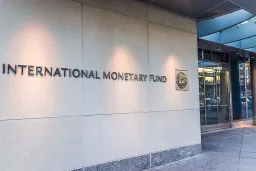Stocks Made Simple: Understanding How You Own a Piece of a Company

Ever wondered what people mean when they say they’re “buying stocks”? Think of it like owning a slice of a giant pie-but instead of pizza, that pie is a company. When you buy a stock, you’re literally owning a tiny portion of that business. That makes you a shareholder, meaning you’re entitled to a share of the company’s profits (if any) and even get a vote in some of its decisions.
If the company grows, launches great products, or earns higher profits, the value of your stock usually increases. But if the business struggles, your stock’s value may decline. In essence, being a shareholder ties your fortune to the company’s success-on a small but impactful scale.
Prev: How can I improve my trading skills step by step
Market Value vs. Face Value
These two concepts are key to understanding how stocks are valued and traded.
Market Value
The market value (or market price) of a stock is the rate at which it currently trades on the stock exchange. It changes constantly as investors buy and sell based on company performance, news, and market sentiment.
Example: Suppose a company’s stock trades at ₹500 today - that’s its market value.
Face Value
The face value (or par value) is the original nominal price assigned to a share when the company first issues it. It’s mostly used for accounting purposes, such as calculating dividends or the company’s share capital, rather than indicating the stock’s real worth.
For instance, if a company issues 10,000 shares at ₹10 each, the face value is ₹10, and the total share capital is ₹1,00,000.
Face value typically doesn’t change unless there’s a stock split or consolidation.
Stock Split and Reverse Split
Stock Split
A stock split increases the number of shares while reducing the price per share - but the total value of your holding stays the same.
Example: You own 100 shares priced at ₹1,000 each. In a 2-for-1 split, you now have 200 shares priced at ₹500 each. The company’s total value remains unchanged, but each share becomes more affordable for new investors.
Why companies do it: It improves liquidity (more shares available for trading) and makes prices psychologically attractive.
Stock Consolidation (Reverse Split)
This is the opposite. A company might want to reduce the number of shares and increase their price.
Example: A 1-for-5 consolidation turns 500 shares worth ₹20 each into 100 shares worth ₹100 each. Your total value remains ₹10,000.
Mergers and Demergers
Merger
When two companies combine to form one large entity, existing shareholders receive shares in the new company, often at a specific ratio. This can make the new, merged firm stronger or more stable.
Example: If Company A merges with Company B, you might receive 1 share of the new company for every 2 shares you own in Company A.
Demerger
A demerger happens when one company splits into multiple independent companies, each focusing on different business areas. Shareholders usually get new shares in both entities, keeping their total value balanced.
Both events can cause temporary volatility in stock prices as investors adjust to the new structure.
Other Key Terms Explained
Let’s look at some fundamental stock market terms that will make your investing journey smoother.
Term | Meaning (Simplified) |
|---|---|
Share | A single unit of ownership in a company—owning it makes you a part-owner. |
Bid and Ask | Bid = the price buyers are willing to pay; Ask = the price sellers want. The gap between them is the spread. |
Broker | A licensed middleman who executes your buy/sell orders on the stock exchange, often charging a small fee. |
Volume | The number of shares traded during a specific time; high volume = active market. |
Liquidity | How quickly a stock can be bought or sold without major price change. |
Volatility | How much a stock’s price moves up and down over time. Highly volatile stocks swing quickly. |
Bull Market | A period where stock prices rise across the market, showing confidence and growth. |
Bear Market | A period of falling prices, showing pessimism and economic slowdown. |
Dividend | A portion of company profits distributed to shareholders. Example: A ₹2 dividend on a ₹10 face value means 20%. |
Earnings | The company’s total profit after expenses, taxes, and costs. |
P/E Ratio | The Price-to-Earnings ratio—shows how much investors are paying for ₹1 of company earnings. High ratio = expensive stock. |
Index | A group of selected stocks representing the market, like Nifty 50 or Sensex in India. |
ETF (Exchange-Traded Fund) | A basket of stocks or bonds that trades like a single stock on an exchange. |
Stop-Loss Order | An automatic sell order to limit loss if a stock’s price falls below your set point. |
52-Week High/Low | The highest and lowest prices a stock has traded at during the past year—shows its price range and investor sentiment. |
Recap: Quick Q&A
Does face value affect the price I pay for a share? No. The market price is generally much higher or lower; face value is for accounting.
Why do companies split or consolidate shares? To adjust trading price and liquidity, not company value.
What happens in a merger or demerger? Your old shares convert to new ones, and your ownership adjusts, but you’re still a part owner.
Next Steps for You
Can you explain to me in your own words the difference between face value and market value of a stock?
Try finding an example of a stock split or merger from the news-what happened to the stock price?









